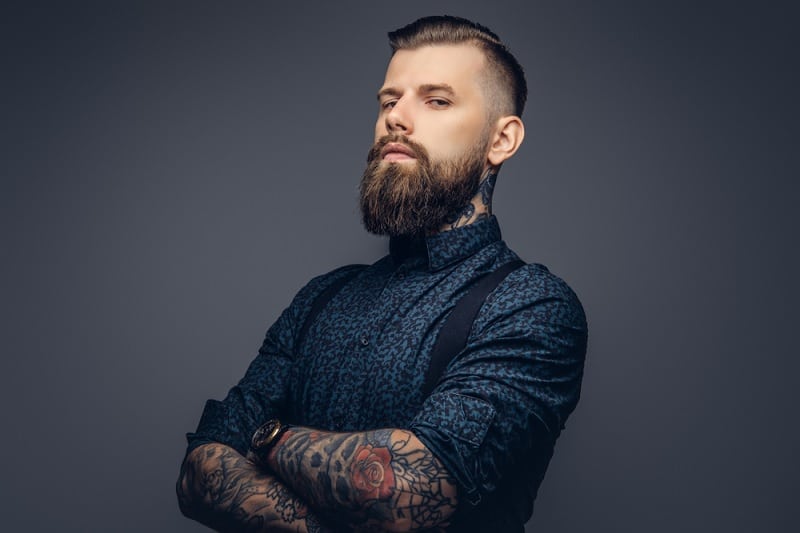
9 Awesome Ducktail Beard Styles for Men
Who would have guessed that ducktail beards are supposed to look like ducktails? Even though their name may be specific, there is still room for variants of this beard trend.
This cool beard style can extend from a circle beard, but most often incorporates a full beard.
Aside from its ducktail resemblance, its key feature is that the facial hair tapers from the cheeks to the chin, with the chin hair being the longest, qualifying it as a type of pointed beard. The chin hair can be styled to curl up a bit as well.
1. Short Ducktail Beard
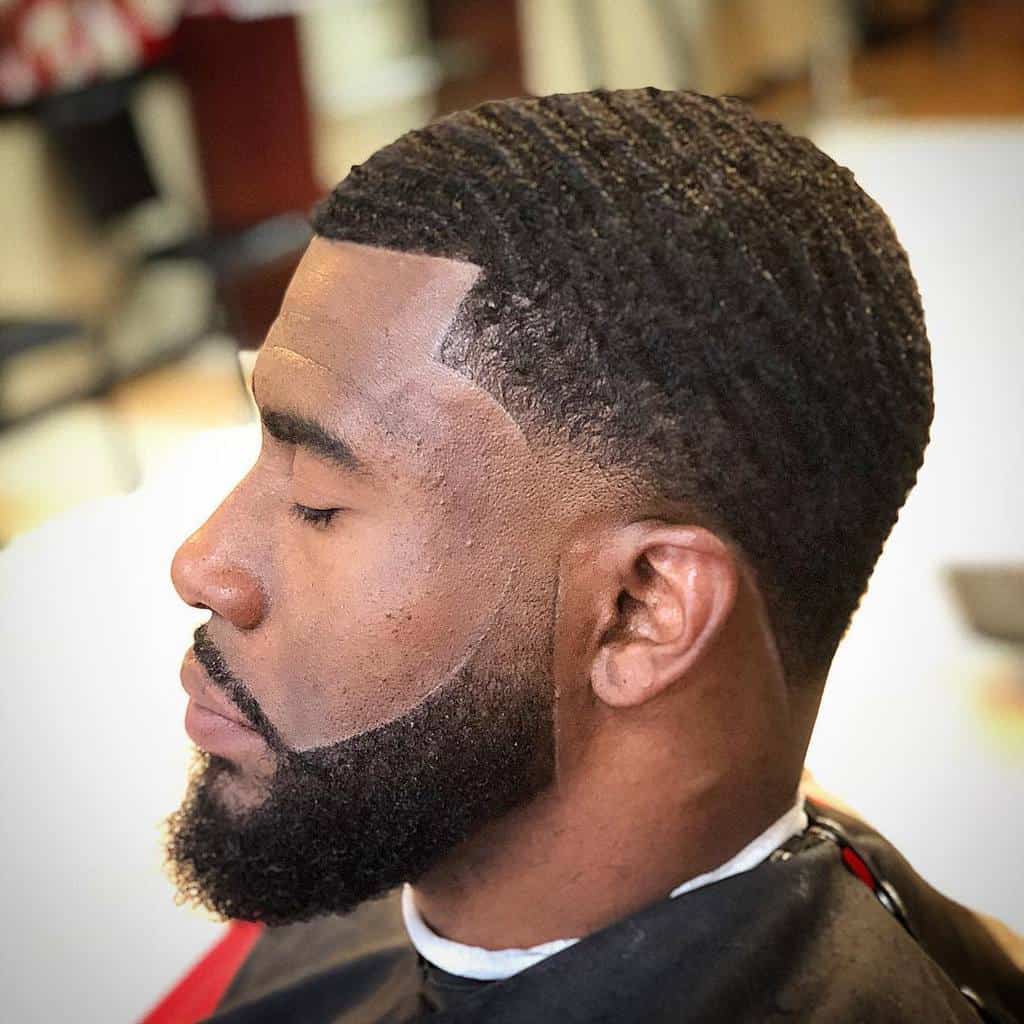
The simplest and easiest to achieve version of this beard style is the short ducktail beard. This can be done by trimming a couple months of beard hair growth to create a gradient of length from the outer edges of the cheeks to the chin.
Facial hair on the cheeks can also transition from a stubble into the longer parts of the ducktail beard as well. The transition in length is essential to identifying this short beard style with ducktail beards.
This type of short beard style is best for those with rounder facial features they would like to balance with a more angular illusion.
2. Medium-Length Ducktail Beard

The mid-length ducktail beard is the most classic and common option of the ducktail beard look. It is just long enough to give a full transition of lengths from short sides to a longer center.
It also is a length to show off the true fullness of your facial hair without being too hard to maintain or having the extra length get scraggly.
The most recommended type of product to maintain this length is beard oil, as its nutritious and healing properties can be beneficial to keeping your ducktail beard healthy, yet not overwhelm this length of facial hair either.
3. Long Ducktail Beard
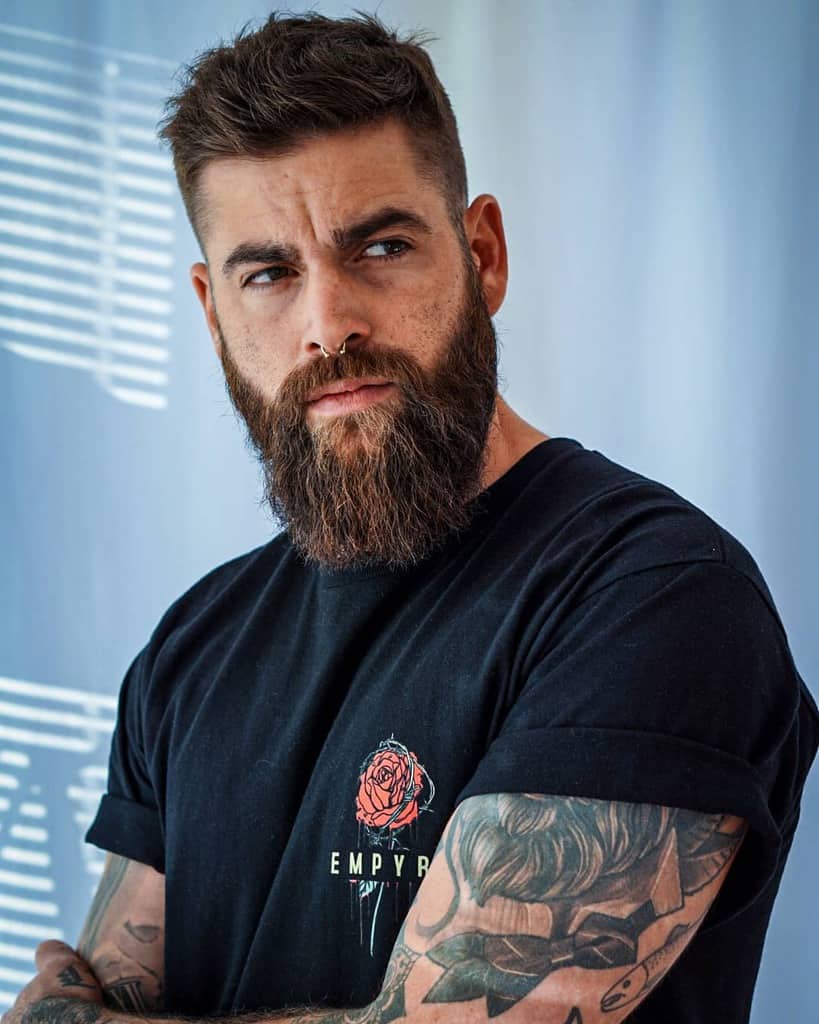
For those that want to go the extra distance of a long beard, longer versions of ducktail beards can be opted for as well. However, it is recommended for the longest beard hairs to stay within 12 inches to prevent the hair from deviating too much from its shape.
Dense, thick hair, and hair with more texture, such as curly or afro-textured hair can get away with having more length, since these types of hair hold more structure. Beard balm is the best type of product to maintain long beard hair.
Not only does it have an adhesive effect that controls longer unkempt hairs, but it still helps condition the ends of the hair that may start to show damage after having it grown out for some time.
4. Pointed Ducktail Beard
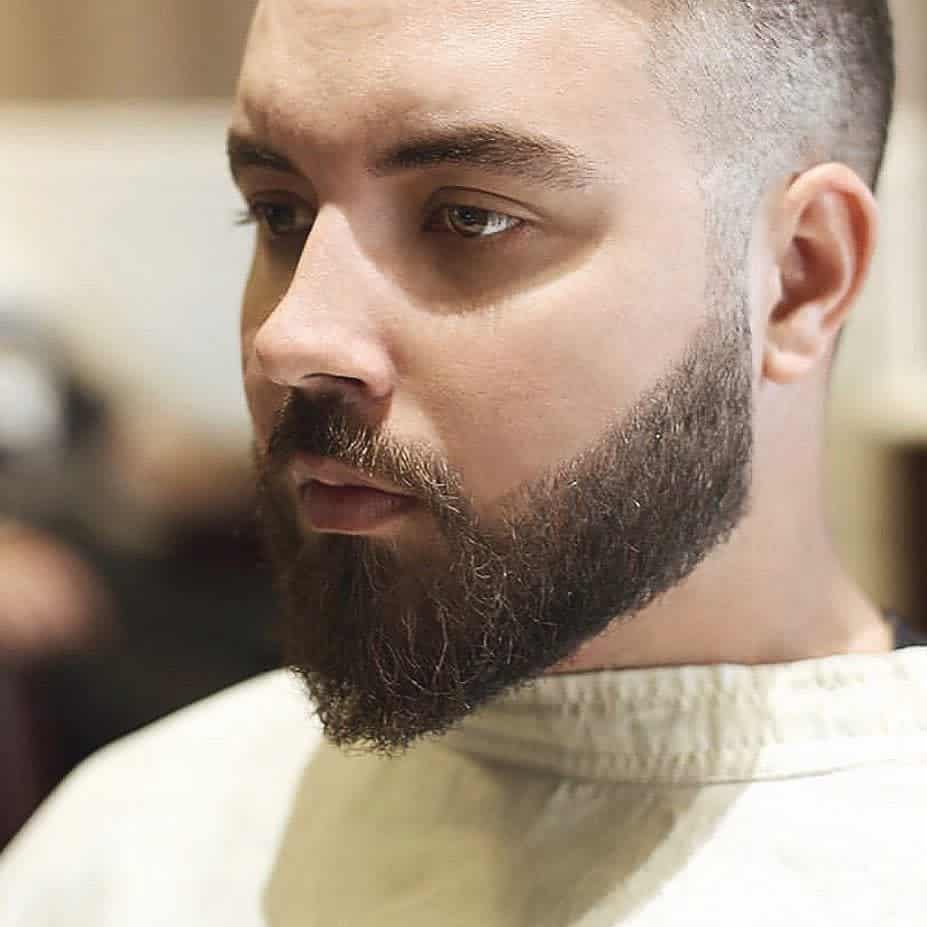
While a classic ducktail beard has a rounded end at the chin, a pointed ducktail beard brings up the pointer game with an even pointier end. This can be achieved with a combination of trimming your facial hair to a pointed beard shape where the chin is and using beard balm or beard oil to further refine the shape.
Beard oil is best used to condition and control frizzy, unkempt hairs to stay within the trimmed beard shape, and beard balm is best for bringing hairs further towards the center of the chin to really sharpen the beard shape.
Those with wider, rounder face shapes can go for this style to add length to their face and further emphasize their chin to make their jawline more angular.
5. Full Ducktail Beard
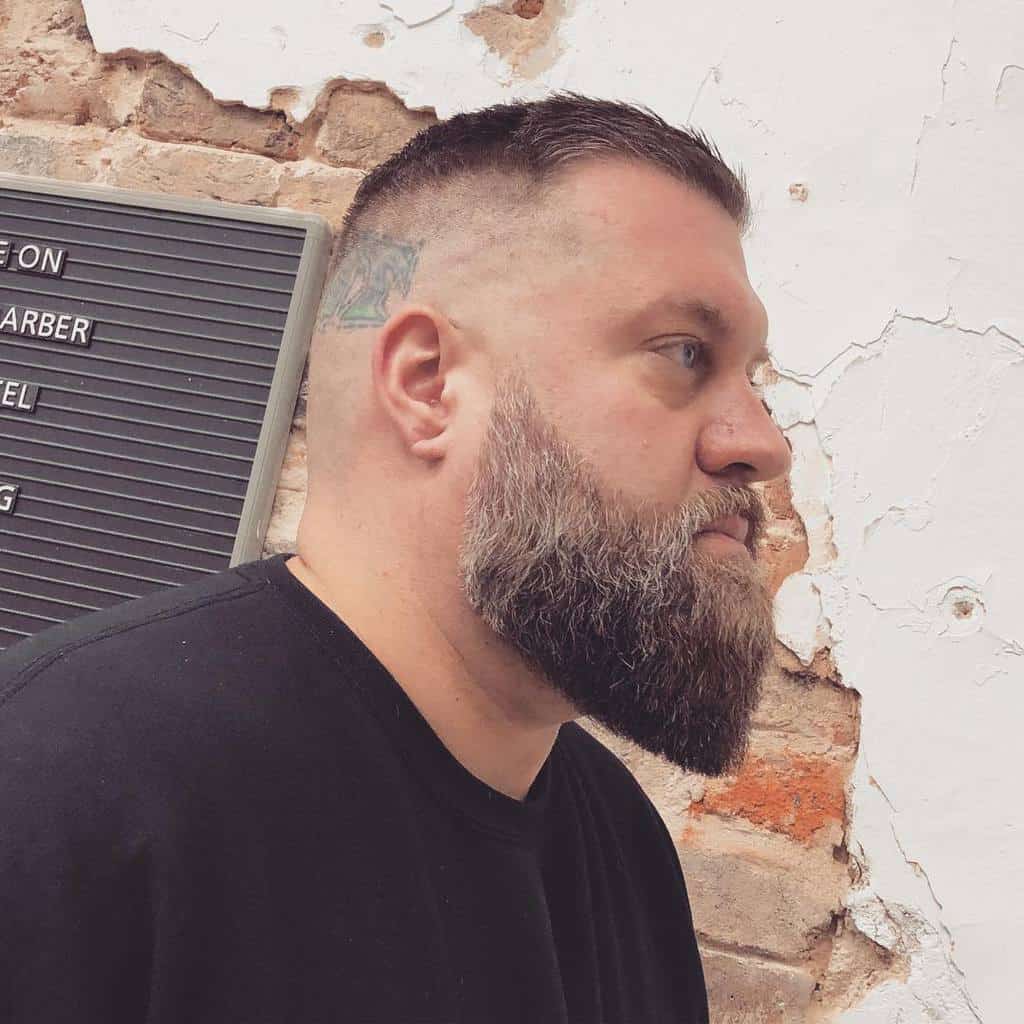
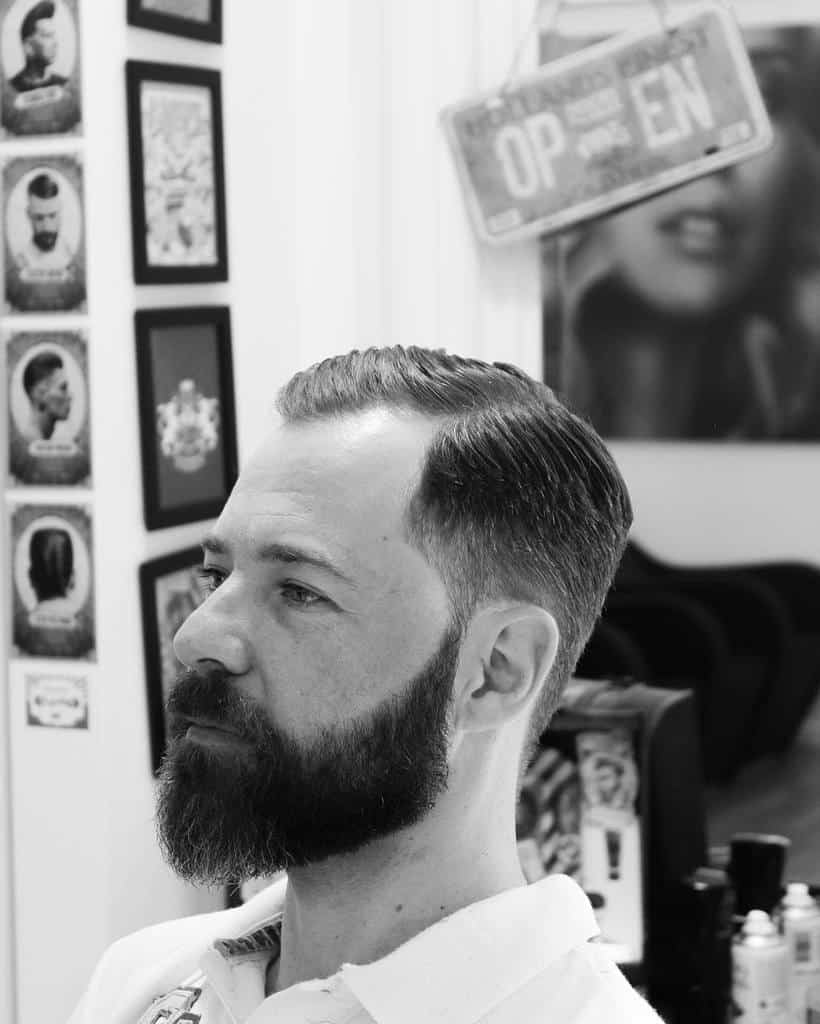
This classic ducktail beard style includes facial hair from the cheeks to the chin, worn in the form of a full facial hairstyle that increases in length as it reaches the chin.
To achieve a fuller ducktail beard, not only does adequate beard growth need to be reached, but consistent trimming is also necessary to keep the hairs at a regulated length.
This combination of length and proper maintenance will help your beard achieve its maximum volume, since this prevents uneven hair lengths that could look scraggly and thinner.
Beard balm is also highly recommended for both conditioning and keeping stray hairs in place. In other words, a groomed full beard gives the impression that it is more robust, yet still presentable and civilized.
6. Bushy Ducktail Beard

A more laid-back form of a full ducktail beard style is its bushy-bearded alternative. This is best for those with thick hair that is going for a more rugged, lumberjack, or Viking beard style.
Evidently, this is lower maintenance, allowing more time between trimmings. Nevertheless, to keep a consistent texture throughout the beard, it is helpful to routinely groom the hair every day with a quality beard comb or beard brush.
A light amount of beard oil also helps condition the facial hair and keep it healthy-looking.
7. Extended Goatee Ducktail Beard
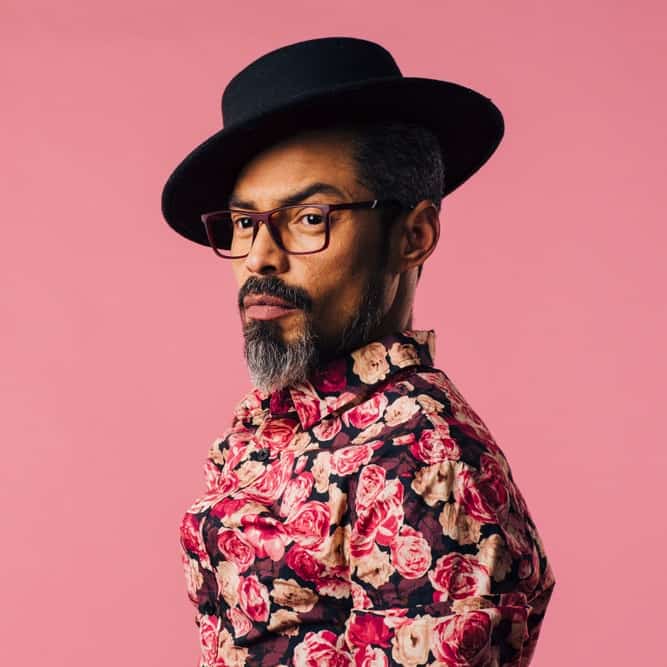
A more subtle form of the ducktail beard look is the extended goatee style. This is essentially a goatee that extends from the chin to the mustache with the sides reaching the outer corners of the jaw, just a couple of sideburns, and covered cheeks away from a full beard.
The key to having this continue to qualify as a ducktail beard is by keeping more length at the chin.
This is best for those with round or oval face shapes who would like to create a stronger appearance at their jawline by giving it more definition.
8. Mustache Ducktail Beard
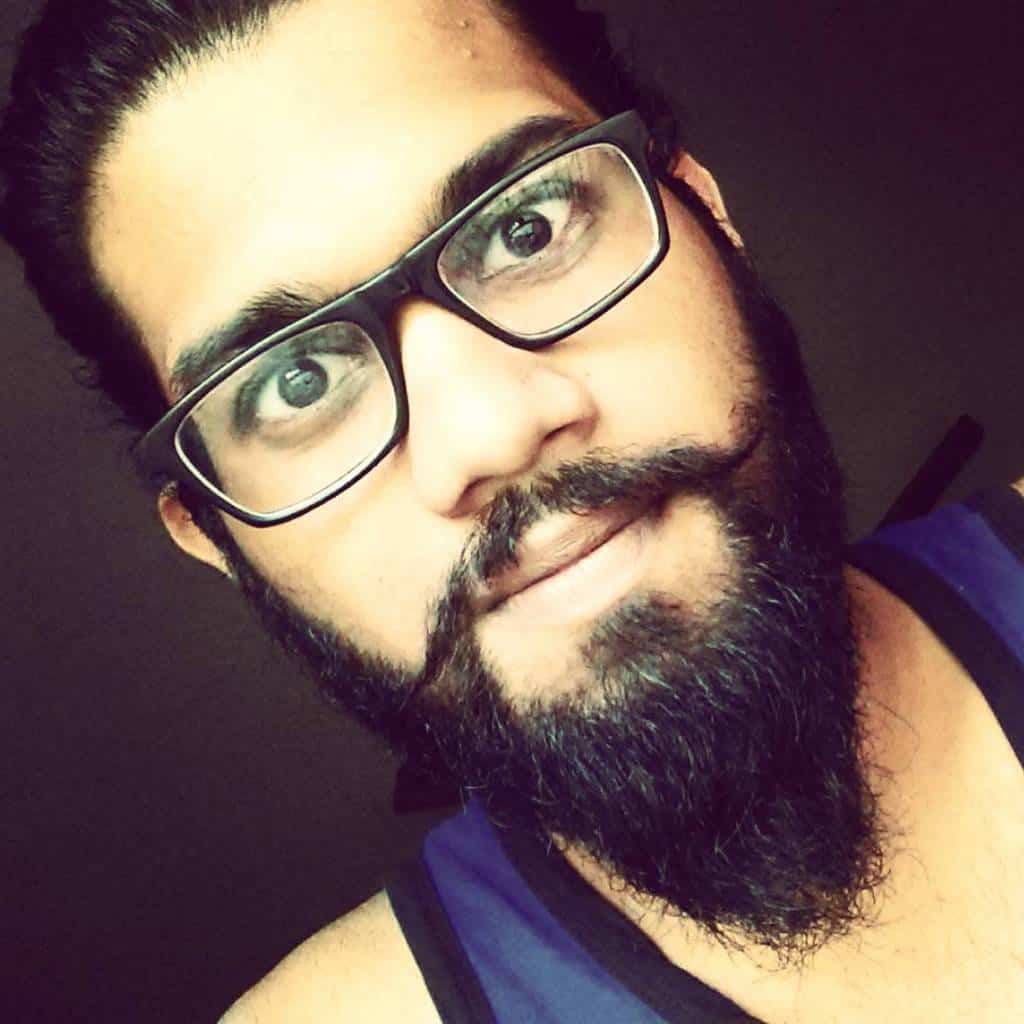
Even though ducktail beards tend to focus on the chin, emphasis can be brought onto the mustache as well by growing it longer. This can either be left unstyled or refined with a beard balm.
One of the most common styles is the handlebar mustache, which consists of bringing the hairs of the mustache from the center to the sides and styling it into a curled-up shape, each side resembling a door’s handlebar.
Beard wax or beard balm that contains wax is strongly suggested for keeping this facial hairstyle in place, as wax has the most hold in it compared to other beard styling products.
9. Sideburns with Ducktail Beards
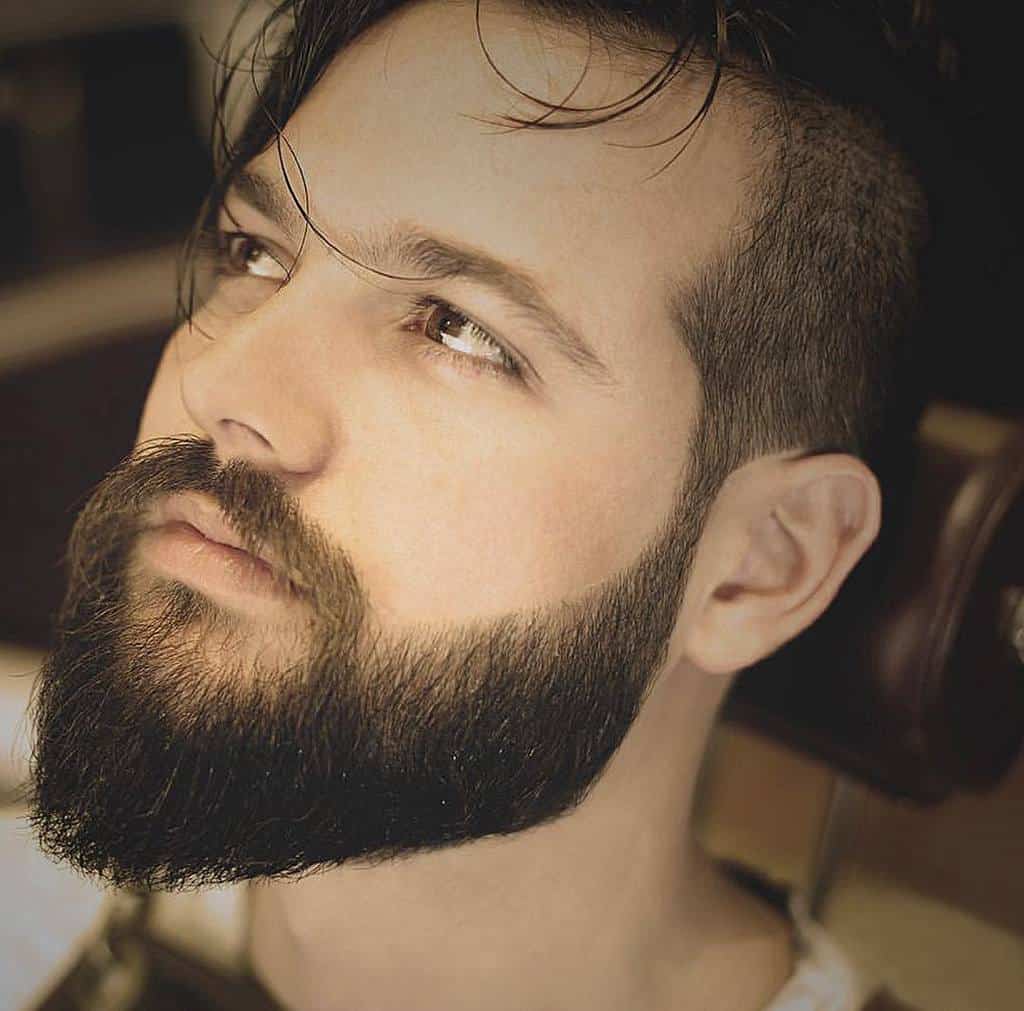
Another area of facial hair that can be emphasized with the ducktail beard is sideburns. This can be done by carefully trimming and grooming the sideburns so they are more shaped up.
Defining them allows them to be more distinguishable and draws the eye more to the sides of your face, which can balance the attention given to your chin from the point of the ducktail beard.
This can also help them blend more with your hairstyle, just short of a grown-out full beard.
Where Does the Ducktail Beard Come From?
The closest ancestor to this beard style is the Van Dyke beard. Though the Van Dyke beard has been recently revived, its identity dates back to Flemish painter Anthony van Dyck.
It is known for its different beard styles that incorporate the mustache and goatee, most notably its 17th century appearance with the mustache slightly curled upwards, resembling the 2010s’ resurgence of the handlebar mustache.
Its goatee styled to taper to a point and curl upwards as well, which quite relevantly points back to the featured facial hairstyle of this article, the ducktail beard.
Looking for beard care guides? Check out these top beard tips.



